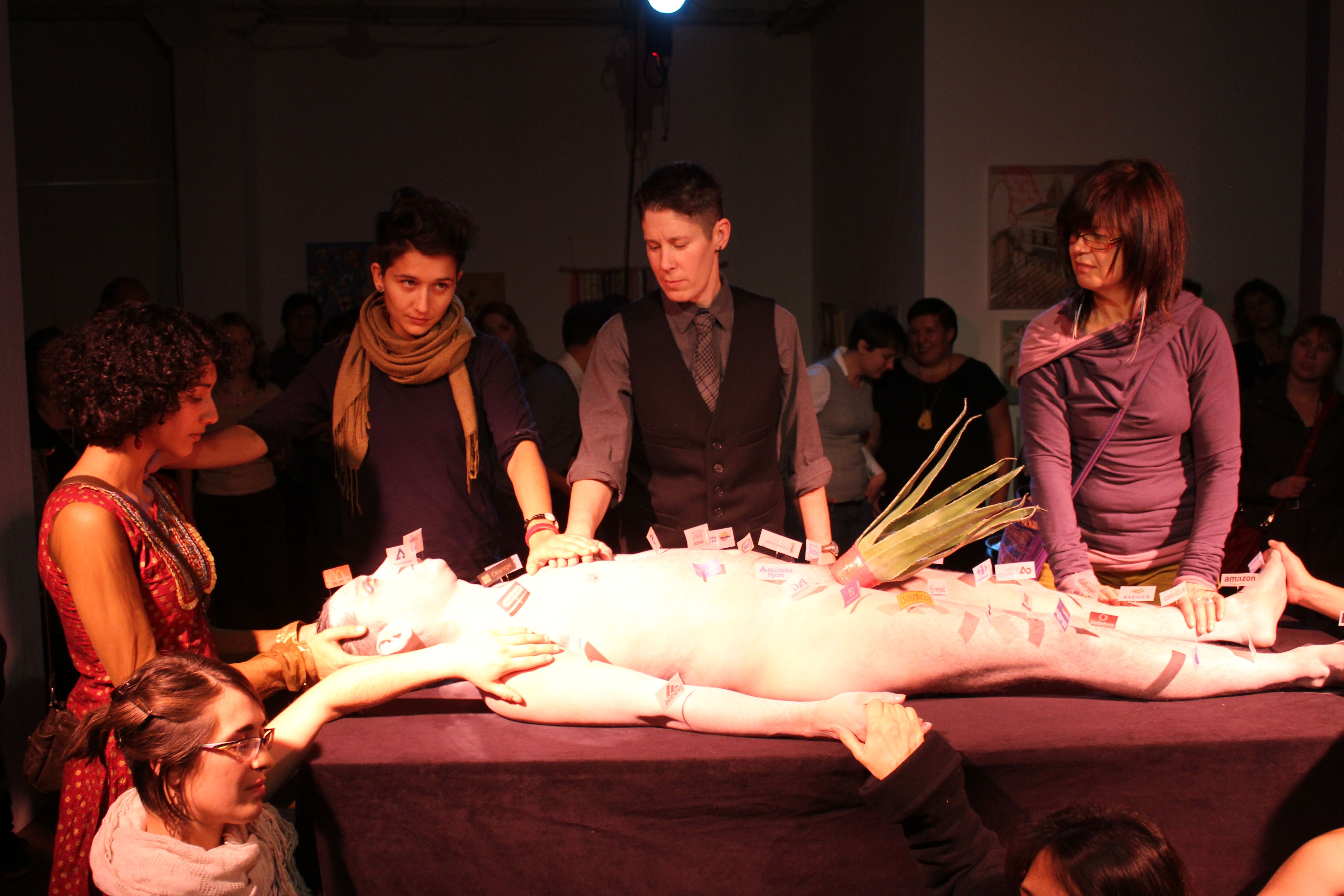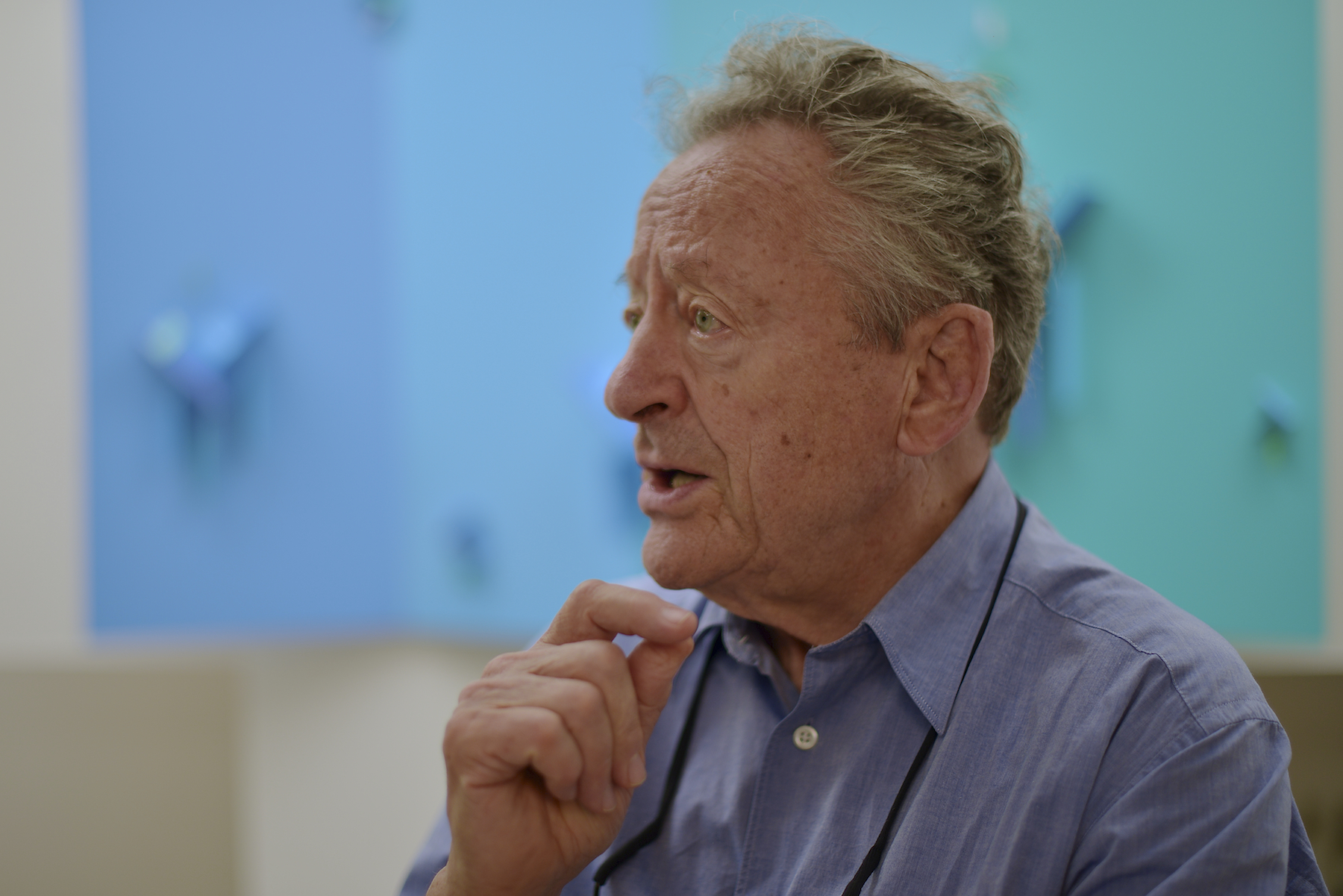At the very least, performance art creates a space of risk-taking, and at best, it sets the stage for a possible transformation. On Nov. 8, dozens of people came together at Urban Shaman Gallery to experience a performance piece called Mapa Corpo 3.0.
“The approaches of performance art, live art, action art provide an untamed, wild field for intervention and dialogue – where critical theory and radical praxis can meet. Mapa Corpo 3.0, by La Pocha Nostra troupe founder Guillermo Gómez-Peña and troupe member Saul Garcia Lopez was a radical intervention into the imaginary, offering a glimpse of what a transvaluation of values can look like in praxis,” says Praba Pilar, one of the organizers of the event.
The “untamed, wild field” of this performance was enacted primarily on two stages.
On one stage, Guillermo Gómez-Peña spoke—both spoken word, and questions for the audience about what the performance would contain, for example, “With or without violence?”—and later staged tableaus involving audience members pointing a gun at him, often locking eyes throughout.
On the second stage, Garcia Lopez lay on a table, first draped in a sheet, which was then gradually removed as an acupuncturist covered his body in needles bearing tiny corporate logo flags.
The audience was invited to place their hands on Garcia Lopez – at first, in a long gap as he lay covered in flag-needles, and later, while others approached to remove them, symbolically decolonizing his body.
Audience member Milena Placentile was invited to hold Garcia’s head during his long wait.
“I’ve been thinking about this a lot, and my primary reflection is that the experience was a ritual more than a performance – a ritual evoking space to practice revolution,” says Placentile. “The performers, especially Saul, put their bodies on the line for attendees [to] engage in various types of decision-making and action.”
“For example, you’re a white man and you’re invited to point a gun at a brown man. Do you accept? Participation, in this case, could have been through refusal. The refusal to recreate centuries of race-based violence. Or, you’re invited to hold the hands, or warm the feet, of an artist enduring tremendous discomfort so you can learn to provide comfort to a total stranger. Do you accept?”
“What I witnessed was a tremendous amount of discomfort in the audience, and that made me sad,” says Placentile. “Were people erecting barriers by aestheticizing the experience instead of using it as an opportunity to interrogate their personal capacity for action?”
“For example, why did people take so long to remove the needles from Saul’s body? [ . . . ] I know Saul is a highly disciplined artist with experience in endurance-based performance, but what we had before us was more than a metaphor. We had an opportunity to estimate who might be willing to do what when shit gets real.”
After the performance, the audience dispersed, and the performers continued their work through the five-day-long Inter-Cultural Dialogue Performance and Workshop. The workshop invited participants to “develop new models for relationships between artists and communities which are neither colonial nor condescending [ . . . ] to find and experience new modes of relating laterally to the ‘other’ in a less mediated way.”
Pilar also participated in the workshop, and offered her reflections on the process that followed.
“Guillermo Gómez-Peña and Saul Garcia Lopez began the five-day performance workshop with the concept of ‘radical tenderness.’ I thought about and through this for the five days, in relation to how we, coming from diverse practices and backgrounds, could interact with each other. As the process unfolded, we reach deeper levels of trust and begin to take more risks, crossing boundaries and borders and reaching out to each other for collaborative aesthetic decisions.”
Local performance artist Lorri Millan, reflecting on the experience of live performance art, says, “While other forms of media communicate, there is something about being live in front of another person, or group of people, that contains empathy and a true possibility of change.”
While in the midst of a performance, every moment is charged with this possibility of change – from performers and audience, in every interaction. This possibility is still held in every moment after the performance. The questions shouted by Garcia Lopez and Gómez-Peña echo on:
“With or without violence?”
“With or without curators?”
With or without radical tenderness?




